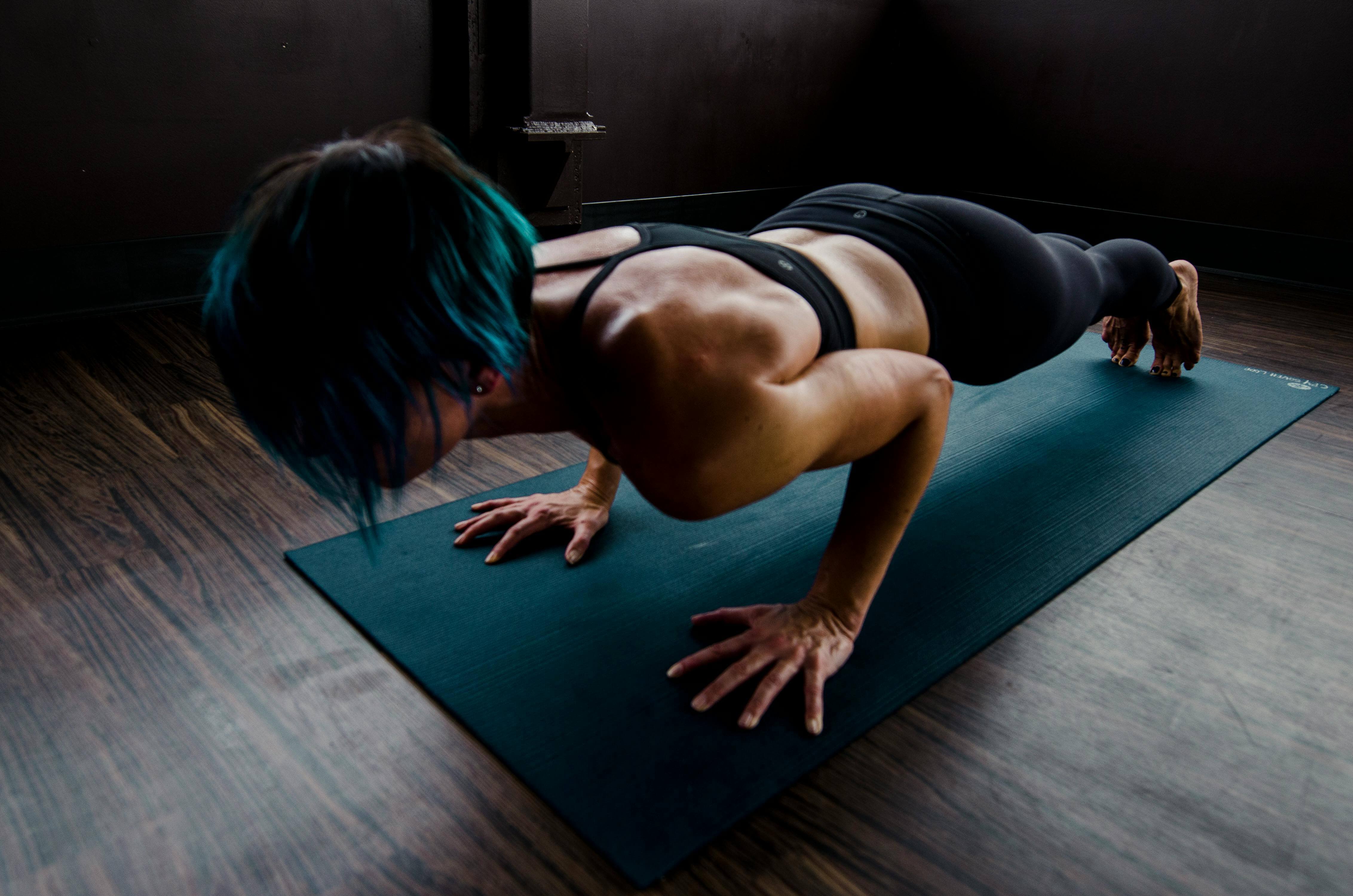Which Exercises Burn the Most Calories?

Which Exercises Burn the Most Calories: When it comes to torching calories, not all exercises are created equal. Some pack a powerful punch, while others might leave you wondering if you’ve burned enough to justify that post-workout snack. Let’s dive into the top calorie-burning exercises and explore how you can maximize your workout routine.
1. Running: The Calorie-Burning Champion
Running takes the gold medal in the calorie-burning Olympics. Whether you’re sprinting or jogging, running engages multiple muscle groups and elevates your heart rate. Here’s the calorie burn breakdown for different body weights:
- 125 lbs: 652 calories per hour
- 155 lbs: 808 calories per hour
- 185 lbs: 965 calories per hour
2. Water Polo: A Surprising Contender
If you’re looking for a fun and intense workout, consider water polo. It combines swimming, treading water, and strategic movements. The calorie burn varies based on your weight:
- 125 lbs: 566 calories per hour
- 155 lbs: 703 calories per hour
- 185 lbs: 839 calories per hour
3. Bicycling: Pedal Your Way to Calorie Loss
Bicycling is an excellent low-impact exercise that gets your legs pumping. Hop on your bike and enjoy the scenery while burning calories:
- 125 lbs: 480 calories per hour
- 155 lbs: 596 calories per hour
- 185 lbs: 710 calories per hour
4. Jump Rope: Childhood Fun with Serious Calorie Burn
Remember skipping rope as a kid? Well, it’s time to revisit that activity. Jump rope is an efficient calorie-burner:
- 125 lbs: 453 calories per hour
- 155 lbs: 562 calories per hour
- 185 lbs: 671 calories per hour
5. High-Intensity Interval Training (HIIT): The Time-Crunched Solution
HIIT workouts involve short bursts of intense activity followed by brief rest periods. These workouts elevate your heart rate and maximize calorie burn. Try these HIIT exercises when you’re short on time:
- High-Knee Running: Burn 240 to 355.5 calories in 30 minutes.
- Run in place, lifting your knees as high as possible.
- Pump your arms vigorously.
- Butt Kicks: Also burns 240 to 355.5 calories in 30 minutes.
- Jog in place, kicking your heels toward your glutes.
- Keep your heart rate up and feel the burn
Warm-Up and Cool-Down Exercises: The Bookends of Your Workout
Warm-Up: Get Ready to Move
Before diving into your main workout, spend a few minutes warming up. A proper warm-up gradually increases your heart rate, improves blood flow, and prepares your muscles and joints for more intense activity. Here are some effective warm-up exercises:
- Light Cardio: Start with 5-10 minutes of brisk walking, light jogging, or cycling. This gets your blood pumping and warms up your muscles.
- Dynamic Stretches: Perform dynamic stretches that mimic the movements you’ll do during your workout. Examples include leg swings, arm circles, and hip rotations.
- Joint Mobility Exercises: Focus on your major joints—ankles, knees, hips, shoulders, and wrists. Move them through their full range of motion to lubricate the joints.
- Gradual Intensity Increase: If you’re about to run, start with a slow jog. If you’re lifting weights, begin with lighter weights before progressing to your working weight.
Remember, the warm-up isn’t about exhausting yourself; it’s about priming your body for action.
Cool-Down: Ease Out and Recover
After your workout, don’t rush off! A proper cool-down helps prevent muscle soreness and promotes flexibility. Here’s how to cool down effectively:
- Low-Intensity Cardio: Spend 5-10 minutes doing light cardio (walking, slow cycling, or gentle jogging). This gradually lowers your heart rate.
- Static Stretches: Focus on the muscles you’ve worked. Hold each stretch for 15-30 seconds. Key areas include hamstrings, quadriceps, calves, chest, and shoulders.
- Deep Breathing: Sit or lie down and take deep breaths. This helps relax your nervous system and aids in recovery.
- Hydrate: Replenish lost fluids by drinking water. Proper hydration supports muscle function and overall well-being.
Why Warm-Up and Cool-Down Matter
- Injury Prevention: Warming up reduces the risk of strains, sprains, and other injuries. It gradually increases blood flow to your muscles, making them more pliable.
- Improved Performance: A good warm-up primes your body for better performance during your workout. You’ll move more efficiently and with greater ease.
- Reduced Muscle Soreness: Cooling down allows your heart rate to return to normal gradually. It also prevents blood from pooling in your extremities, reducing post-workout soreness.
Remember, consistency in warm-up and cool-down routines pays off in the long run. Treat them as essential parts of your fitness journey. Happy exercising! 🏋️♂️🔥
Calorie Burning Exercise Chart
Certainly! Let’s explore a calorie-burning exercise chart to help you make informed choices during your workouts. Remember that the calorie estimates provided are approximate and can vary based on factors like intensity, duration, and your weight. Here are some top exercises for burning calories:
- Running: Lace up those sneakers and hit the pavement! Running burns the most calories per hour:
- 125 lbs: 652 calories
- 155 lbs: 808 calories
- 185 lbs: 965 calories
- Water Polo: Surprisingly effective, water polo combines swimming and strategic movements:
- 125 lbs: 566 calories
- 155 lbs: 703 calories
- 185 lbs: 839 calories.
- Bicycling: Hop on your bike and pedal away:
- 125 lbs: 480 calories
- 155 lbs: 596 calories
- 185 lbs: 710 calories.
- Calisthenics: Bodyweight exercises like push-ups and squats:
- 125 lbs: 480 calories
- 155 lbs: 596 calories
- 185 lbs: 710 calories.
- Circuit Training: Mix it up with a variety of exercises:
- 125 lbs: 480 calories
- 155 lbs: 596 calories
- 185 lbs: 710 calories.
- Jump Rope: Childhood fun with serious calorie burn:
- 125 lbs: 453 calories
- 155 lbs: 562 calories
- 185 lbs: 671 calories.
- Stationary Bicycling: Pedal indoors for a great workout:
- 125 lbs: 420 calories
- 155 lbs: 520 calories
- 185 lbs: 622 calories.
- Rowing Machine: Row your way to calorie loss:
- 125 lbs: 420 calories
- 155 lbs: 520 calories
- 185 lbs: 622 calories.
- Aerobic Dance: Groove and burn:
- 125 lbs: 396 calories
- 155 lbs: 492 calories
- 185 lbs: 587 calories.
- Swimming (Casual): Dive in and swim:
- 125 lbs: 396 calories
- 155 lbs: 492 calories
- 185 lbs: 587 calories.
- Jogging: A classic calorie burner:
- 125 lbs: 396 calories
- 155 lbs: 492 calories
- 185 lbs: 587 calories.
- Hiking: Explore the outdoors while burning calories:
- 125 lbs: 340 calories
- 155 lbs: 421 calories
- 185 lbs: 503 calories.
On a Time Crunch
When time is limited, opt for high-intensity workouts like High-Knee Running or Butt Kicks:
- High-Knee Running: Burn 240 to 355.5 calories in 30 minutes.
- Run in place, lifting your knees as high as possible.
- Pump your arms vigorously.
- Butt Kicks: Also burns 240 to 355.5 calories in 30 minutes.
- Jog in place, kicking your heels toward your glutes.
- Keep your heart rate up and feel the burn
Impact of sleep on calorie burn
Sleep plays a crucial role in our overall health, and it can indeed impact our calorie burn. Let’s explore how:
- Resting Metabolic Rate (RMR):
- During sleep, our body performs essential functions, including repairing tissues, synthesizing proteins, and maintaining hormonal balance.
- RMR refers to the number of calories our body burns at rest to sustain these vital processes.
- Lack of sleep can disrupt RMR, leading to potential weight gain.
- Hormonal Regulation:
- Sleep influences hormones related to appetite and metabolism.
- Leptin, which signals fullness, decreases with inadequate sleep, potentially causing overeating.
- Ghrelin, the hunger hormone, increases when we’re sleep-deprived, leading to cravings for high-calorie foods.
- Physical Activity and Energy Levels:
- A good night’s sleep enhances our energy levels and motivation to exercise.
- Conversely, sleep deprivation can leave us feeling sluggish, reducing our inclination to be physically active.
- Muscle Recovery and Growth:
- Sleep is essential for muscle repair and growth.
- During deep sleep stages, our body releases growth hormone, aiding in muscle recovery after workouts.
- Without adequate rest, muscle repair is compromised, affecting overall calorie expenditure.
- Thermoregulation and Brown Fat Activation:
- Sleep helps regulate body temperature.
- Brown fat, a type of fat that burns calories to generate heat, is more active during deep sleep.
- Insufficient sleep may hinder brown fat activation, impacting calorie burn.
- Stress and Cortisol:
- Lack of sleep increases stress levels and triggers the release of cortisol (the stress hormone).
- Elevated cortisol levels can lead to weight gain, especially around the abdominal area.
Tips for Better Sleep and Calorie Burn:
- Consistent Sleep Schedule: Aim for 7-9 hours of quality sleep each night.
- Create a Relaxing Bedtime Routine: Dim lights, avoid screens, and engage in calming activities.
- Watch Your Diet: Limit caffeine and heavy meals close to bedtime.
- Exercise Regularly: Physical activity improves sleep quality.
- Optimize Sleep Environment: Comfortable mattress, cool room, and minimal noise.
- Manage Stress: Practice relaxation techniques like meditation or deep breathing.
How stress affects calorie burning during workouts?
Let’s delve into how stress impacts calorie burning during workouts. Stress can play a significant role in our overall health and fitness journey:
- Stress and Calorie Burn:
- Stress triggers the release of hormones like catecholamines (such as adrenaline and noradrenaline).
- These hormones prepare the body for a fight-or-flight response, increasing heart rate, blood flow, and energy mobilization.
- During intense exercise, stress-induced catecholamines can enhance calorie burn.
- High-Intensity Interval Training (HIIT):
- HIIT workouts, which involve short bursts of intense activity, naturally induce stress.
- Catecholamines surge during HIIT, leading to increased glucose production and utilization.
- Despite the short duration, HIIT can significantly elevate calorie burn1.
- Emotional Stress and Sweating:
- Emotional stress (such as anxiety or nervousness) can also impact sweating.
- When stressed, the body activates its cooling mechanism, leading to increased perspiration.
- Sweating itself doesn’t directly burn calories, but it’s a sign of heightened metabolic activity.
- Adaptation and Plateaus:
- The body adapts to repetitive stress, including exercise routines.
- Over time, the effectiveness of certain exercises in terms of calorie consumption may decrease.
- Varying workouts helps prevent plateaus and maintains ongoing caloric burn.
- Mind-Body Connection:
- Stress affects our mindset and motivation.
- Feeling stressed can impact our willingness to engage in physical activity.
- Prioritizing stress management (through relaxation techniques, meditation, or mindfulness) indirectly supports consistent exercise.
FAQs About Calorie-Burning Exercises
Absolutely! Consider swimming, cycling, or even dancing. Find what you enjoy and stick with it.
Work with a personal trainer who can tailor the calculation to your individual factors.
Yes, the more you weigh, the more calories you’ll burn during physical activity.
Absolutely! While structured workouts are effective, everyday activities contribute too. Cleaning the house, gardening, and even playing with your kids can help burn calories. Every little bit counts!
Consistency matters more than duration. Aim for at least 150 minutes of moderate-intensity exercise or 75 minutes of vigorous exercise per week. Break it down into manageable chunks throughout the week.
Yes! Weightlifting builds muscle, which increases your resting metabolic rate. Even after your workout, your body continues to burn calories as it repairs and maintains muscle tissue.
Unfortunately, spot reduction is a myth. You can’t choose where your body burns fat. Focus on overall calorie burn and strength training to tone specific areas.


